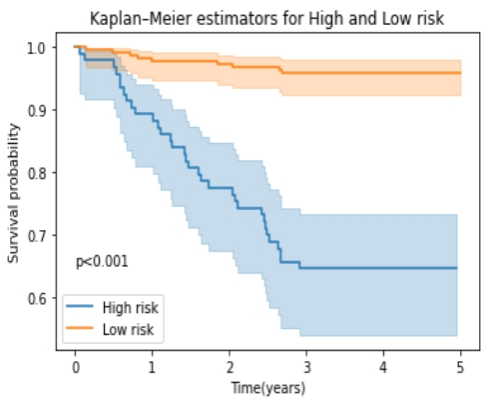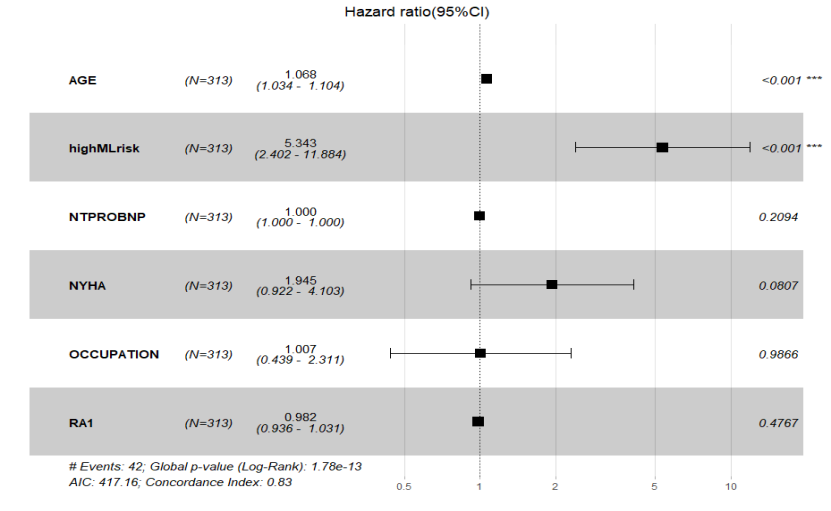公共卫生学院张岩波教授课题组关于冠心病心力衰竭患者3年全因死亡率的可解释性预测研究最新成果
2021年9月,在国际学术期刊Computers in Biology and Medicine上以“Interpretable prediction of 3-year all-cause mortality in patients with heart failure caused by coronary heart disease based on machine learning and SHAP”为题在线发表了山西医科大学公共卫生学院张岩波教授团队的研究论文。
在本研究中,作者开发并测试了一种可解释的基于机器学习(machine learning,ML)的风险分层工具,以预测冠心病引起的心衰患者在3年随访期间的全因死亡率。在6种ML分类器中,XGBoost的性能最好,因此,作者使用该模型来创建ML风险评分。研究发现该风险评分模型明显优于目前可用的其他风险评分。最终结果表明,ML具有临床应用的潜力,以改善风险评估。同时,作者利用SHAP值和SHAP图证明了ML方法可以说明冠心病心衰患者的关键特征,建立高精度的死亡率预测模型。特征重要性的说明和特征重要性的可视化解释可以让医生直观地理解XGBoost中的关键特征,帮助医生更好地理解模型的决策过程,结果中描述的详细信息和对于风险因素的解释让医生更有洞察力,可以帮助他们做出更明智的决定,而不是一味盲目地相信算法的结果。
山西医科大学公共卫生学院2018级博士研究生王可为文章第一作者,山西医科大学公共卫生学院张岩波教授和山大一院韩清华教授为共同通讯作者。该工作得到国家自然科学基金、重大疾病风险评估山西省重点实验室等多方资助。
A
 |
B
 |
Figure1Categorization threshold of Prediction score(A)andKaplan–Meier estimator for populationwith low and high machine learning risk (B).

Figure2Multivariable Cox regression for3-yearall-cause death prediction.
Figure3Variable importance in ML classification for men (A,N= 1023) and women (B,N= 539). Kaplan–Meier curves for subjects with highand low ML risk in mam (C) and woman (D).
No-survivor
 |
Survivor
 |
Figure4The interpretation of model prediction results with the two samples. (The values of each variable are normalized values.)